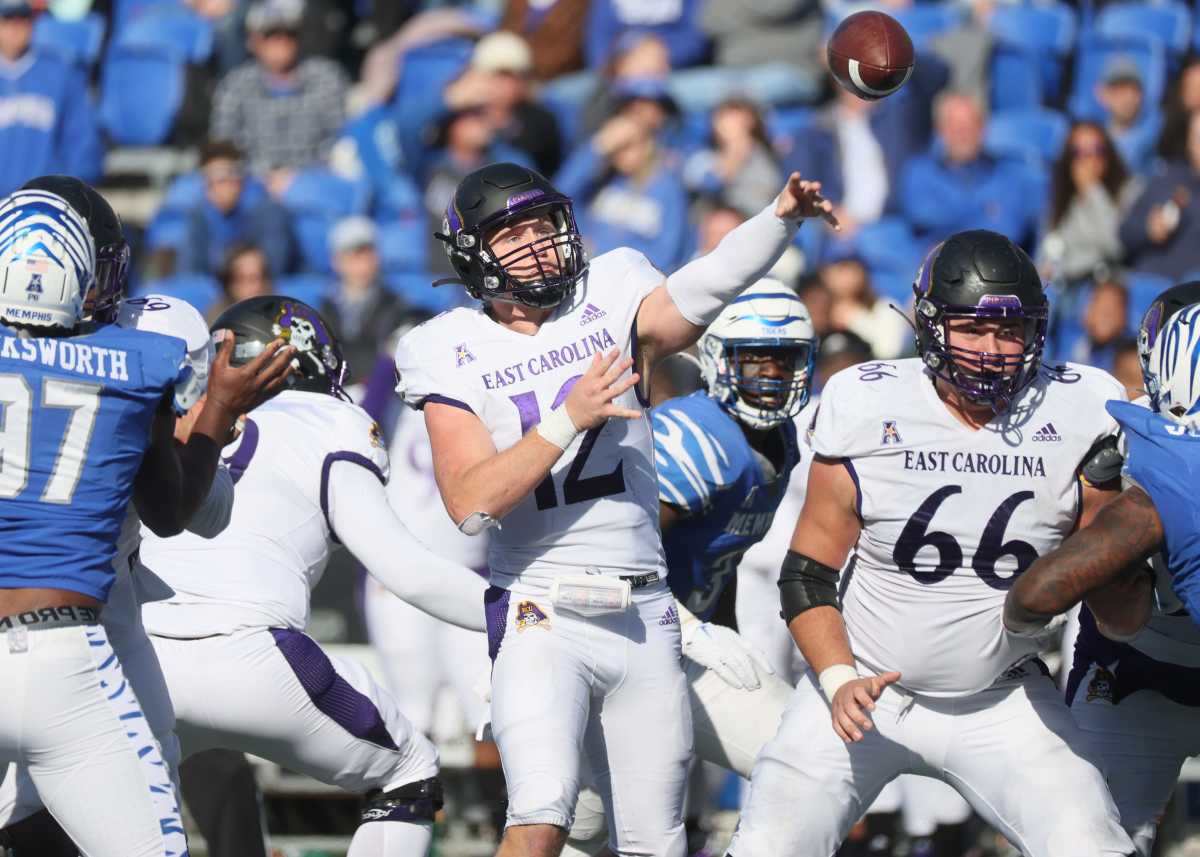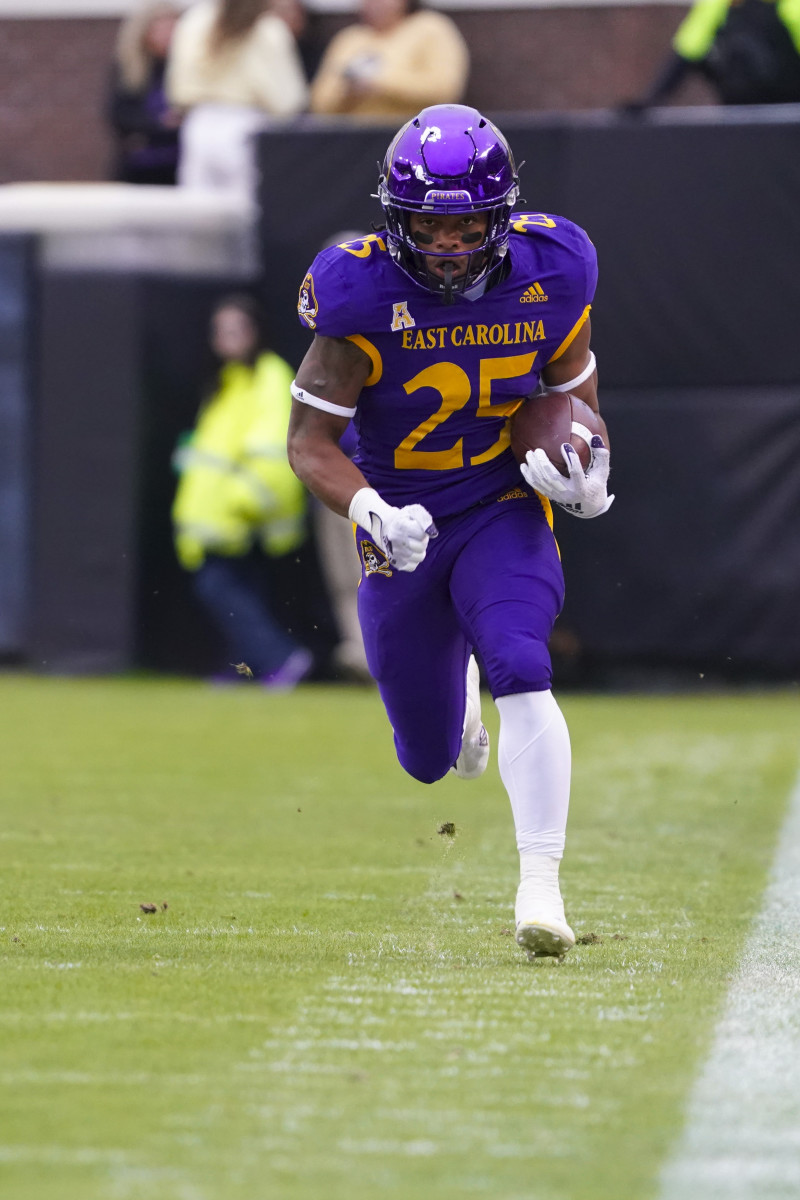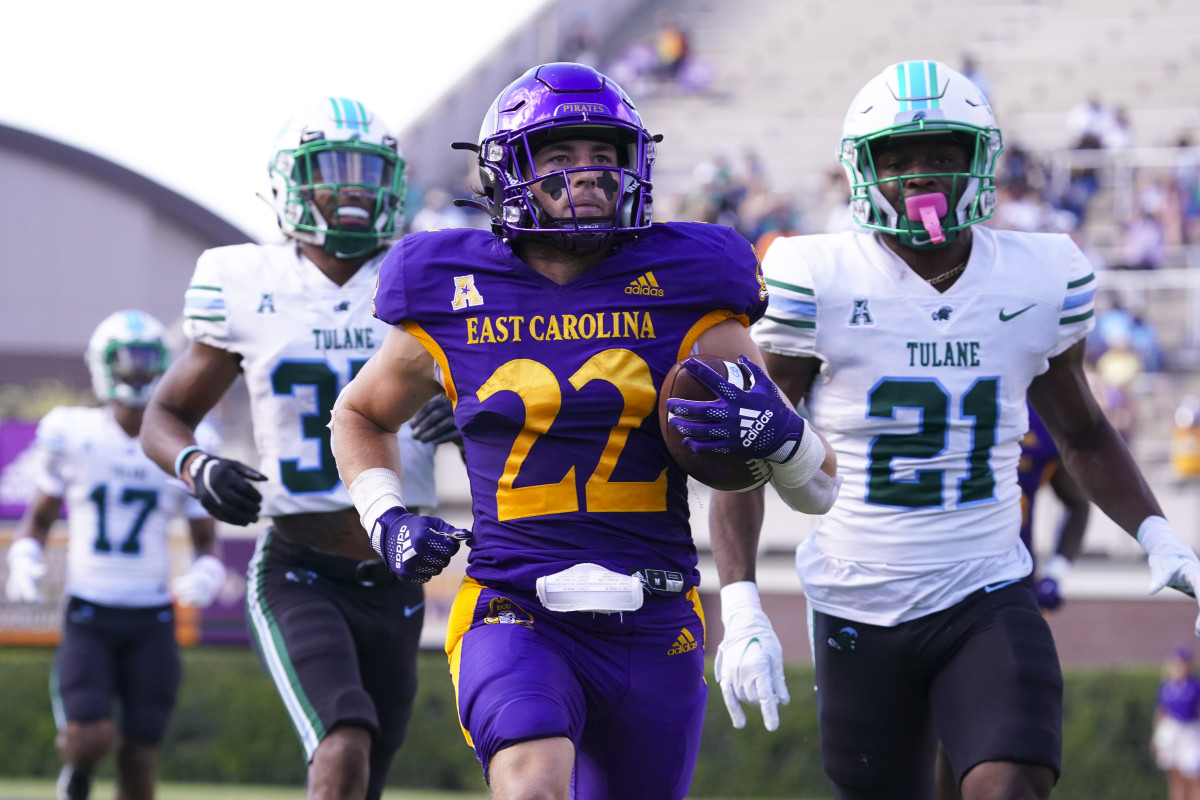Military Bowl: ECU Offensive Players to Watch
When the Boston College Eagles face off against the East Carolina Pirates in the Military Bowl, they'll face a formidable passing offense. ECU ranks third in the conference and 23rd in the country in passing yards per game (271.5). They also have an effective running game, such that their entire offense ranks in the top-40 nationally. This article exhibits the three most important players on East Carolina's offense and how BC can stop them.

Holton Ahlers, QB #12, 6’3”, 230, Jr.*
Holton Ahlers has been ECU’s starting quarterback for the last few seasons. He is from Greenville and despite earning scholarship offers from several Power-Five schools, he elected to stay home and help resurrect the program. Ahlers played in 10 games as a true freshman, starting five in the middle of the 2018 season. He earned the starting job to begin the 2019 season and has not surrendered it since.
Ahlers made the Pirates’ offense one of the best aerial attacks in the AAC and even the nation. He is one of the few left-handed quarterbacks in college football today and is also a threat to run; while he is not the most explosive or slippery athlete, his stocky body helps him generate yards after contact. Ahlers has thrown for over 10,000 yards in his career, adding on 69 touchdowns and 32 interceptions. He has also rushed 1259 yards and 19 touchdowns.
Despite his extensive experience, Ahlers has not generated much on-field success for the Pirates. His record as a starter stands at 15-22, with 2021 as the only season where he led ECU to a winning record. Ahlers has been decently efficient for the Pirates but generally unremarkable as a quarterback. He has not been used as much as a runner the last two seasons, as ECU has pivoted towards a more passing-oriented offense.
This season, Ahlers has thrown 417 passes, completing 256 of them (61.3%, 70.3% Adjusted), for 3123 yards (7.5 yards per attempt, 12.6 yards per completion). He has thrown 18 touchdowns and 10 interceptions, earning an NFL passer rating of 88.8, ranking 80th among FBS quarterbacks (20% snap minimum). The ECU passing offense relies on quick throws, specifically attacking zone coverage. This is borne out by Ahlers’ low average depth of target (ADOT) of 8.2, tied for the 22-lowest among FBS quarterbacks, and his time-to-throw of 2.53 seconds, tied for 27th-quickest. Furthermore, over 60% of his passing attempts were thrown between 9 yards past and behind the line of scrimmage.
As a passer, pressure greatly impacts Ahlers and his ability to execute the offense. Part of the blame falls on his offensive line, as Ahles was sacked 35 times in 2021, the tenth-most among FBS quarterbacks. He also endured the 13th-most pressures this season, 83.9% of which were attributed to the offensive line (32nd-highest). According to Pro Football Focus, Ahlers’ Passing grade drops from 86.9 when kept clean to 39.3 when pressured.
On tape, Ahlers tends to drop his eyes and try to scramble when pressure begins to collapse the pocket. Even though the offense is designed to get the ball out of his hands quickly, he panics when there is a defender in his face. Ahlers can run but he is not the greatest athlete so if he tries to escape, most defensive ends and linebackers can track him down. Furthermore, he does not have the most natural arm talent, making it very difficult for him to make throws off-platform and out of structure. If he isn’t in rhythm, standing in the middle of a clean pocket, Ahlers will struggle to consistently deliver accurate throws.

Keaton Mitchell, RB #25, 5’9”, 188, Fr.*
Keaton Mitchell is in his second year with ECU and became the Pirates’ primary running back this season. Mitchell is a smaller running back but he’s very elusive and can make big plays out of seemingly nothing. On only 174 carries, he ran for 1117 yards this season, averaging 6.4 yards per carry, adding on nine touchdowns. Mitchell is also a threat in the passing game, as he was targeted 29 times, reeling in 23 catches for 254 yards (11.0 YPC) with one touchdown. His elusiveness is especially apparent after the catch, as he forced 14 missed tackles as a receiver this year.
Mitchell is a very interesting player in that he is a smaller back but he does a very good job creating yards after contact. This year, 568 of his yards came after contact, good enough for an average of 3.26 yards after contact per carry, seventh-best in the AAC (and the same amount as Pat Garwo). One drawback of Mitchell’s style, however, is that he is somewhat reliant on chunk runs. He is second in the conference in runs of 10+ and 15+ yards and leads the conference in breakaway yards with 608. 54.4% of Mitchell’s yards came on breakaway runs, which is the tenth-highest mark nationally (50 carry minimum).
While it is good that he can create explosive plays for his offense, I think he is a bit of a feast-or-famine runner. The BC defense has struggled giving up explosive plays this season, so it could be a prolific day for Mitchell. But if the Eagles' defensive line can dominate a generally unimpressive Pirates’ offensive line, they might eliminate a key element of ECU’s offense.

Tyler Snead, WR #22, 5’7”, 174, R-So.*
Tyler Snead is the Pirates leading receiver and has been their number one target for the last few years. Snead currently has 200 career receptions for 2369 yards and 18 touchdowns. This season, he leads ECU in targets (97), receptions (66), and yards (854). He’s also second on the team in touchdowns with four. Snead appears as the dictionary definition of a slot receiver; he’s small but shifty, catches basically everything thrown at him, and he can even throw the ball a bit. This season, he is in the slot the least among his four seasons with the Pirates and he’s still there for almost 95% of his reps (94.6%).
In ECU’s offense, Snead is asked to execute the typical duties of a slot receiver, especially in an air raid offense. His average depth of target is only 8.4 yards, which is actually a substantial increase from last year’s mark of 6.6. Only 36 of Snead’s 97 targets came ten yards or more past the line of scrimmage. Most of his routes are variants of stick or spot routes, where he is asked to identify open or soft spots in the defense’s zone coverage and just sit down in the void, presenting an easy target for the quarterback to find and hit.
For Boston College to stop Snead, the solution is pretty simple: Josh DeBerry. Assuming DeBerry is back and healthy for the bowl game, he should be able to lock Snead up. Furthermore, the defensive coaches should instruct DeBerry to follow Snead all over the field, especially in man coverage. As previously mentioned, much of Snead’s success is predicated on attacking the holes in underneath coverage. By matching up BC’s most athletic and best cover cornerback on him in man coverage, Snead should not be able to enjoy the same amount of prosperity.
DeBerry should be able to shut down Snead for a bevy of reasons. Firstly, DeBerry is larger and longer than Snead. DeBerry has four inches on Snead and thus most likely has longer arms. This should allow DeBerry to jam and press Snead at the line of scrimmage, throwing off the timing of his route. Secondly, DeBerry is an excellent athlete, most likely superior to Snead. He should be able to prevent the diminutive receiver from generating much separation and even if he does, his athletic ability should allow him to recover quickly. Snead has 25 more targets than the next receiver on his team; if the Eagles want to slow down the Pirates’ passing offense, limiting Tyler Snead with Josh DeBerry in man coverage should be the first step.
